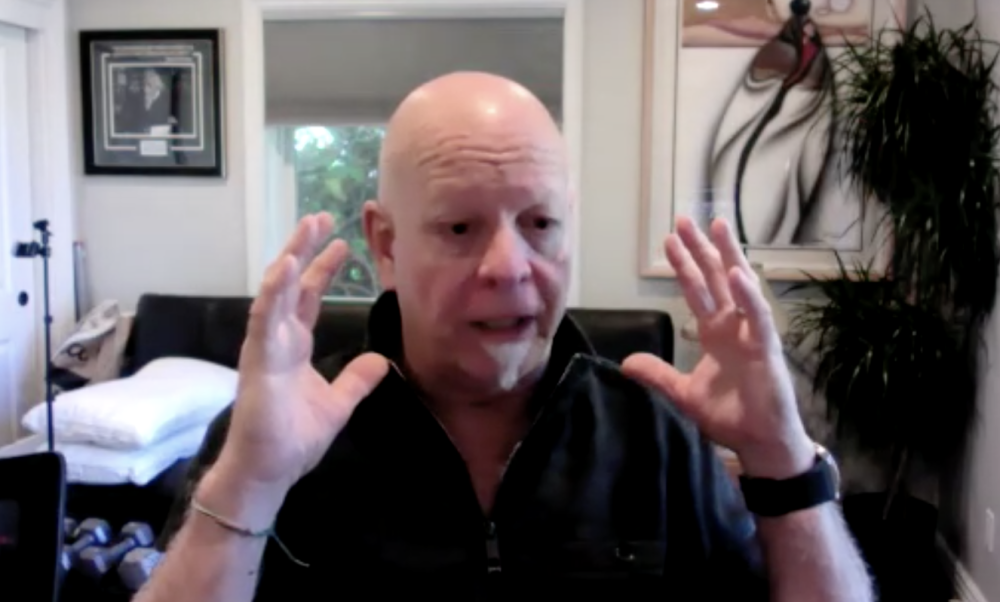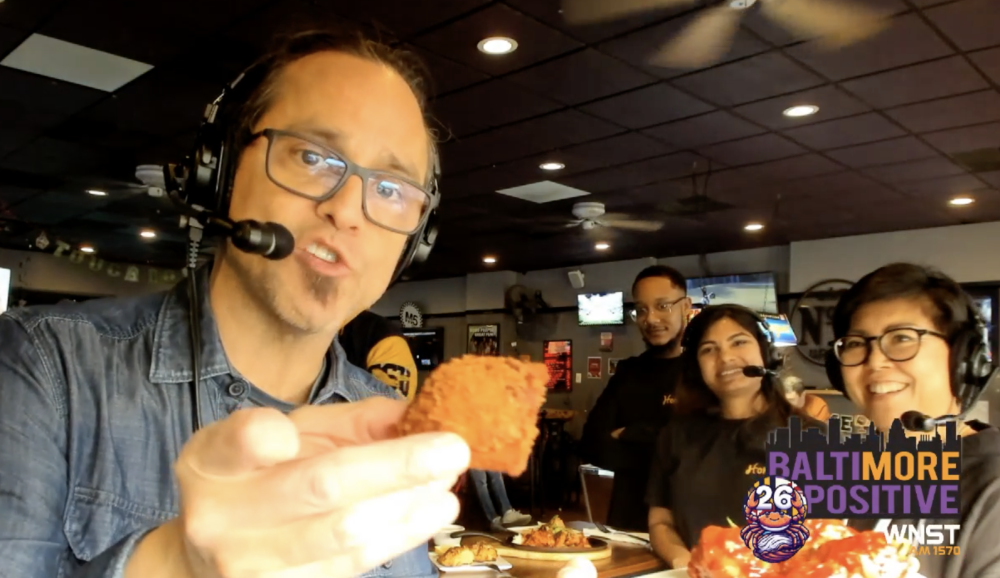There was tension inside the walls of the Ravens’ facility in Owings Mills. Billick was getting second-guessed at every turn and factions were building to oust him. This was a turning point for the franchise and a clear direction moving forward wasn’t as clear to Bisciotti, who was privately second-guessing and agonizing over his decision to give Billick a four-year extension earlier in 2007.
There had long been rumored friction between the two dominant personalities and Bisciotti famously demanded changes from Billick in front of reporters in early 2006 during one of his first forays with the media as the full-time owner of the Ravens.
To understand how the Ravens won Super Bowl XLVII in New Orleans in January 2013 you must first understand Bisciotti’s situation with the team.
Bisciotti, who has now been a part of two Super Bowl wins in 14 seasons as an NFL owner, is a very approachable figure in Owings Mills, where the Ravens practice in the state-of-the-art Under Armour Performance Training Center that the team entered in 2004. In a building that looks more like a Castle than a workplace, he knows virtually everyone in the building and while he’s not an “everyday to practice” or “9-5” owner, he’s a presence within the company and most everyone calls him “Steve” because that’s the way he likes it.
Despite originally being hired by Art Modell and his staff in the 1990’s, many holdovers continue from the Cleveland Browns days as well as “first in” hires of the Baltimore Ravens in 1995-96. Bisciotti hasn’t made or mandated one change anywhere on the scouting or player personnel side of the Ravens that Ozzie Newsome essentially founded when the Browns moved to Baltimore in 1996. Over the last 25 years, the Ravens might be the most stable office staff in the NFL, especially given the move from Cleveland to Baltimore in November 1995.
And while Steve Bisciotti did ink his coach to a four-year, $24 million extension, he didn’t originally hire or pick Brian Billick. He inherited him. And Bisciotti didn’t like what he was seeing in December 2007 and clearly didn’t have the right feeling about Billick moving forward.
In 2004, Bisciotti and Billick made an offer to longtime Washington Post sportswriter John Feinstein to write a book following the team at every step, in every meeting and in every breath it seemed. In the book, “Next Man Up,” an outstanding view of an NFL franchise with dashed expectations and various dramas, Bisciotti acknowledged that some things about Billick rubbed him the wrong way.
He openly said he thought Billick had “bad habits” and was “disrespectful.” Billick addressed him (and most everyone else) as “young man” which Bisciotti didn’t find to be nearly as endearing as Billick did. They clashed over Matt Cavanaugh’s role in the offense. Bisciotti didn’t like Billick’s demeanor with the Ravens’ scouts and the way he allegedly used his height to intimidate smaller people.
Billick even hinted that the two might have too much in common on the personality side. “It occurred to me that Steve reminded me of somebody: Me. He came right at you, told you what he thought and if you didn’t like it, tough!”
No one saw them as best pals, soul mates or even closely matched confidants but most believed that a four-year extension for a Super Bowl-winning coach coming off a 13-3 season was as ringing of a long-term endorsement as you can find in the NFL. There was no doubt that Bisciotti respected Billick’s abilities and track record as an NFL head coach. And there was no doubt that Billick wanted to win, and that was a quality that Steve appreciated.
But Bisciotti – and specifically, Cass – didn’t like what they were seeing and hearing inside their building during December 2007 when the Ravens were in a rare position of “playing out the string” of meaningless, dreadfully cold home games.
Bisciotti and Cass didn’t like the preseason feeling of Christmas week games. They felt that Brian had lost his way and began examining all aspects of the franchise during that holiday season. And the feedback they got and the feelings they created cried out for change in their minds.
This is what they were hearing:
Players stopped believing in Brian’s message. The assistant coaches Billick was hiring weren’t of the caliber they were a decade earlier. Rex Ryan had his own fiefdom on the defensive side of the ball, and the defense didn’t respect Billick. Billick had no relationship with the defense because he was too busy being the offensive coordinator. Billick was involved in too many other issues inside the building that weren’t football related.
By all accounts, Bisciotti believed it was a fractured room, a fractured building and a fractured culture. And at some point during December 2007, Bisciotti stopped believing the Ravens could win a Super Bowl again with Brian Billick.
Bisciotti was very succinct and emotional at a somber press conference on Dec. 31, 2007 announcing the firing of Brian Billick.
“I started my business at 23 years old and in order to be successful you have to take chances and in order take chances you have to listen to your heart and go with your gut and you believe with a track record that when you get the answer you go with it,” he said. “It doesn’t mean you don’t pray on it and it doesn’t mean you don’t fear being wrong. I do fear being wrong. I could be three coaches past Brian Billick nine years from now and trying to solve this puzzle. It’s such a difficult business. All I have to be is better than my competitors in the other industry that I spent 20-some years in. In this, I’ve got 32 players going for one prize, every year and how much blame you put on different people and how much you hold yourself responsible is something that is new to me and I hope that over time that Baltimore views me as the same quality of an owner as Brian Billick was as a head football coach. I’ve got some catching up to do to the man I’ve just asked to step down today. The jury is out on me. Brian already has gotten his Super Bowl. I’ll try to make y’all proud.”
Clearly, with one day left in 2007, the franchise was now at a crossroads.
Bisciotti felt like he had the right personnel man in Ozzie Newsome and the right staff. He felt like he had a cupboard full of quality players in Ray Lewis, Ed Reed, Terrell Suggs, Haloti Ngata, Derrick Mason, Todd Heap and Chris McAlister – all Pro Bowl, if not Hall of Fame, caliber talent.
So, how could this group manage a 5-11 record in 2007?
Any coach in the NFL will tell you the same story: “If you have no quarterback, you have no chance.”
“Five years later – with some clarity – I can understand where Steve was coming from in that I didn’t develop a quarterback in the nine years,” Billick said after the Ravens’ Super Bowl XLVII win. “He saw that having a coach and a quarterback develop together and build together was a good strategy in other places.”
But from the outside, Bisciotti encountered a mixed bag of feedback on “changing his mind” regarding firing an always-well-respected Billick and the first time he’d really felt pressure from the fan base as the sole owner – and prime decision maker — of the Baltimore Ravens.
This was as much of a public — and quite expensive — admission of a failure or hiring mistake publicly as you’ll ever see an NFL owner make in firing a Super Bowl-winning coach. And everything in the building changed and it certainly shook up the entire organization, which was its intent.
It was pretty clear that wasted money wasn’t an issue for Bisciotti. He wanted a younger leader to grow with the team. He wanted a new voice. He wanted a fresh message. He wanted to win a Super Bowl and that’s all that he’s ever pointed to with any decision over his first decade as the Ravens’ owner.
As Bisciotti later said: “I made a very, very difficult decision to part ways with Brian. And then I found my equilibrium.”
Bisciotti enacted a search committee that was a fairly unorthodox process by NFL standards. There are as many different flow charts across the NFL as there are teams, it seems, and ways and methods that owners hire football personnel evaluators and coaches. Sometimes it’s the owner’s pick, done on the porch of his estate after you’re flown in on a private jet. Sometimes it’s a corporate decision made in a boardroom with a series of meetings across the organization with a timed agenda. Sometimes, when it’s an established winning coach like Bill Parcells, who famously said he wanted to pick the groceries when he’s making a meal, you are finding out about personnel power on and off the field as much as picking just a true head coach.
There is no standard way to hire an NFL head coach. And looking at the power structures that have won Super Bowls over the past decade, there are indeed many different personalities and many different ideologies and personnel packages that could claim victory.
And no matter who is on the committee or how the search is executed there are only so many kinds of candidates to be a head coach in the NFL. Usually there are three ways to become a “hot” candidate to get interviewed or considered by NFL ownership: be a former NFL head coach, be a winning offensive or defensive coordinator for a playoff team, or be a big-time college head coach with NFL experience ready to move back to the professional game.



























